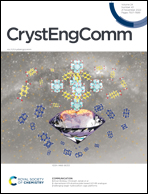Fabrication of mixed matrix membranes with regulated MOF fillers via incorporating guest molecules for optimizing light hydrocarbon separation performance†
Abstract
Mixed matrix membranes (MMMs) can overcome the limitations of traditional polymers and are considered to be promising membranes for the separation of light hydrocarbons, attributed to the excellent selectivity of porous fillers combined with the processability and mechanical stability of the polymer matrix. Both the pore environment of crystalline porous fillers, such as metal–organic frameworks (MOFs), and the interfacial compatibility between the filler and matrix have a significant effect on the separation performance of MMMs, while few studies have focused on tuning the pore environment by guest molecule loading to improve the separation performance of MMMs. Herein, MIL-101-SO3Ag/PIM-1 and PMA@MIL-101/PIM-1 are fabricated with tailored fillers, obtained by confining Ag(I) and phosphomolybdenum heteropoly acid (PMA) into the pores of MIL-101-SO3H and MIL-101, respectively. The loading ratios of both guest molecules and fillers have been optimized. Due to the enhanced affinity with olefins upon the incorporation of guest molecules, both MIL-101-SO3Ag/PIM-1 and 7.5% PMA@MIL-101(1 : 2)/PIM-1 membranes exhibited higher separation selectivity for C2H4/C2H6 and C3H6/C3H8, compared with the pristine PIM-1 and MIL-101 series membranes. The MMMs reported in this work provide a new strategy for constructing high-performance MMMs based on designed fillers.



 Please wait while we load your content...
Please wait while we load your content...